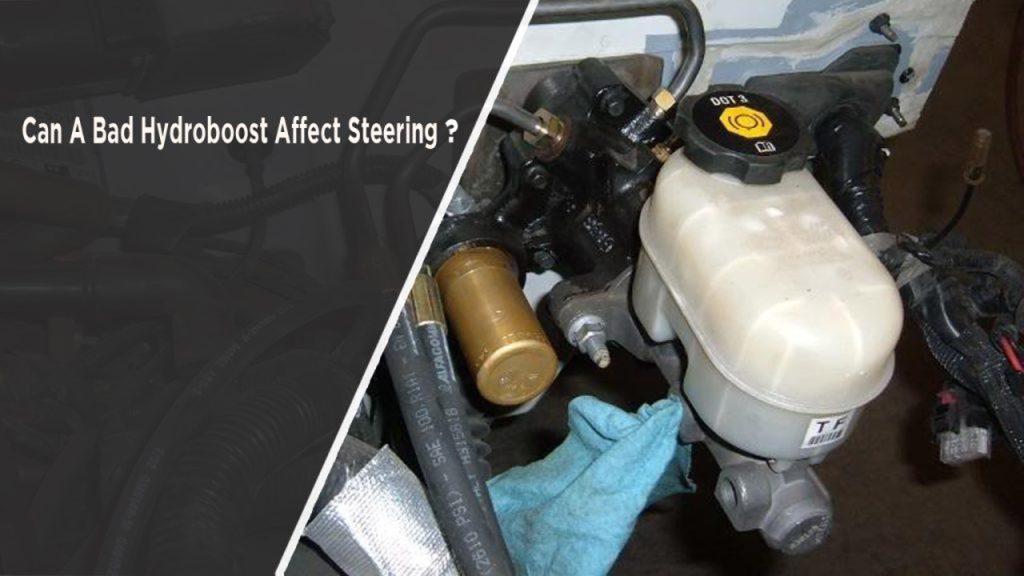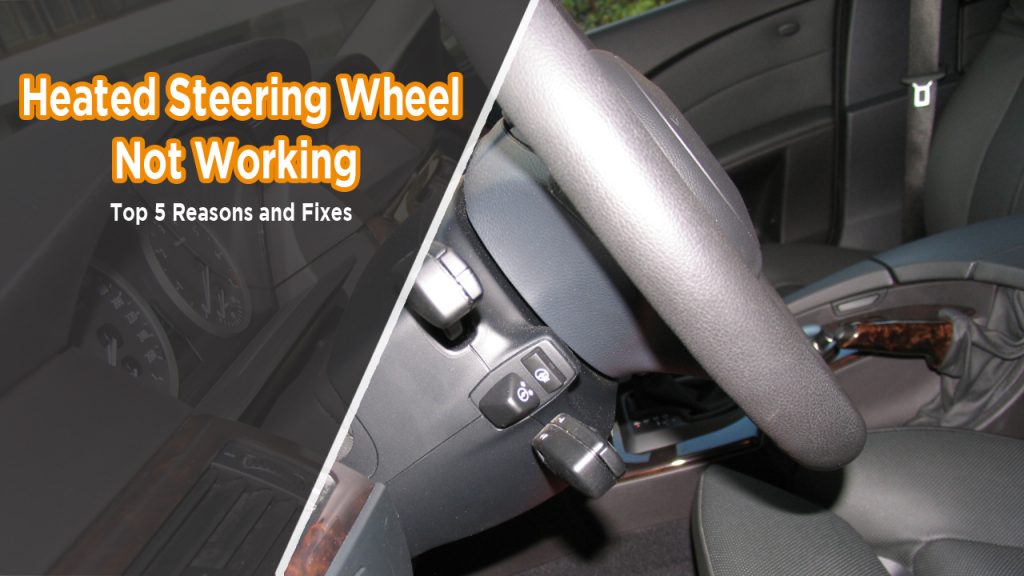If you’ve noticed your vehicle’s steering feels off lately, it might be more than just worn-out tires or a steering alignment issue. Believe it or not, your hydroboost system might be to blame. As someone who’s spent countless hours under the hood and behind the wheel, I can tell you that a bad hydroboost can directly impact your ability to steer. It’s not just about brakes—this component plays a critical role in maintaining control of your vehicle.

In this guide, I’ll explain what the hydroboost system is, how it can affect your steering, and what you can do to fix the issue. By the end, you’ll have a clear understanding of how to diagnose and address this common but often misunderstood problem.
What Is a Hydroboost System?
Let’s begin with the basics. A hydroboost system is part of your vehicle’s power braking system. Instead of relying on vacuum pressure to amplify the force applied to your brakes, it uses hydraulic pressure, usually sourced from the power steering pump. This setup is particularly common in heavier vehicles like trucks, SUVs, and diesel-powered cars, where more braking power is needed than what a vacuum-based system can deliver.
How Does the Hydroboost System Work?
The hydroboost system connects directly to the power steering pump. When you press the brake pedal, hydraulic pressure from the pump multiplies the force, allowing you to brake efficiently with minimal effort. At the same time, this pressure powers your steering, enabling smoother and more responsive handling.
When the hydroboost system malfunctions, it disrupts this delicate balance, potentially affecting both braking and steering.
How Can a Bad Hydroboost Affect Steering?
A bad hydroboost doesn’t just cause brake problems—it can make steering a lot more challenging. Since the hydroboost system shares hydraulic pressure with the power steering system, any issues with the hydroboost can reduce the amount of pressure available for steering. Here’s how this might play out:
Increased Steering Effort: If the hydroboost isn’t functioning properly, you might notice it takes more effort to turn the steering wheel, especially at low speeds. This is often described as a “stiff” or “heavy” steering feeling.
Erratic Steering Behavior: A malfunctioning hydroboost can cause inconsistent steering responses, making it difficult to control the vehicle precisely.
Hydraulic Pressure Loss: A leak or clog in the hydroboost system can reduce the overall hydraulic pressure, directly impacting the steering system’s performance.
Signs Your Hydroboost System Is Failing
Recognizing the signs of a bad hydroboost system early can prevent costly repairs and keep you safe on the road. Here’s what to look out for:
Stiff Steering Wheel
If you feel like you need to wrestle with the steering wheel just to make a turn, your hydroboost system could be the issue. This is particularly noticeable when driving at low speeds or while parking.
Noisy Steering or Braking
A whining, hissing, or groaning sound when turning the wheel or pressing the brake pedal might indicate a hydraulic issue. These noises often come from the power steering pump or the hydroboost unit itself.
Poor Braking Performance
Since the hydroboost is primarily part of the braking system, you might notice longer stopping distances, a spongy brake pedal, or a lack of responsiveness when you press the brakes.
Leaking Hydraulic Fluid
Hydraulic fluid leaks around the hydroboost unit or power steering pump are a red flag. A loss of hydraulic fluid can affect both steering and braking.
Warning Lights on Dashboard
Some vehicles have dashboard indicators for brake or steering system issues. If you see these lights, it’s worth investigating the hydroboost system.
Common Causes of Hydroboost Failure
Understanding what causes hydroboost issues can help you address the problem effectively. Here are some of the most common culprits:
Worn or Damaged Components
Over time, components like seals, hoses, and valves in the hydroboost system can wear out, leading to leaks or reduced performance.
Power Steering Pump Issues
Since the hydroboost system relies on hydraulic pressure from the power steering pump, any issues with the pump—such as clogs or wear—can affect the hydroboost.
Low Hydraulic Fluid Levels
Insufficient hydraulic fluid can lead to reduced pressure in the system, impacting both steering and braking.
Contaminated Hydraulic Fluid
Dirty or degraded hydraulic fluid can cause clogs and reduce the efficiency of the hydroboost system.
How to Diagnose Hydroboost-Related Steering Problems
If you suspect your hydroboost is causing steering problems, here’s how to diagnose the issue:
- Check the Fluid Levels: Start by inspecting the power steering fluid reservoir. Low or dirty fluid can indicate a problem.
- Look for Leaks: Examine the hydroboost unit, power steering pump, and associated hoses for signs of hydraulic fluid leaks.
- Listen for Noises: Pay attention to any unusual noises when turning the steering wheel or pressing the brake pedal.
- Test Steering Responsiveness: Try turning the wheel at low speeds. If it feels unusually stiff or unresponsive, the hydroboost system might be the cause.
How to Fix a Bad Hydroboost System
Once you’ve identified the issue, it’s time to take action. Here are the most common solutions:
Replace Damaged Components
Worn-out hoses, seals, or valves should be replaced to restore proper hydraulic pressure.
Flush the Hydraulic System
If the hydraulic fluid is contaminated, flushing the system and replacing the fluid can improve performance.
Repair or Replace the Hydroboost Unit
In severe cases, the hydroboost unit itself might need to be repaired or replaced. While this can be costly, it’s often the best solution for restoring full functionality.
Service the Power Steering Pump
If the power steering pump is failing, repairing or replacing it can resolve both steering and braking issues.
Preventing Hydroboost Problems
Maintenance is key to avoiding hydroboost issues in the first place. Here’s how to keep your system in top shape:
- Check Fluid Levels Regularly: Make it a habit to inspect your hydraulic fluid levels and top off as needed.
- Use the Right Fluid: Always use the manufacturer-recommended hydraulic fluid to prevent clogs and wear.
- Inspect for Leaks: Periodically check for leaks around the hydroboost system and power steering pump.
- Address Issues Early: Don’t ignore early warning signs like stiff steering or noisy brakes.
Conclusion
A bad hydroboost system can absolutely affect your steering, making it harder to control your vehicle and increasing the risk of accidents. By understanding how the hydroboost works, recognizing the signs of failure, and knowing how to fix it, you can stay ahead of the problem and keep your vehicle running smoothly.
From my experience, addressing hydroboost issues promptly not only saves you money in the long run but also ensures a safer and more comfortable driving experience. Whether you choose to tackle the repairs yourself or seek professional help, the key is not to ignore the warning signs.
FAQs
What are the symptoms of a failing hydroboost system?
Stiff steering, poor braking performance, hydraulic fluid leaks, and unusual noises are common signs of hydroboost failure.
Can I drive with a bad hydroboost?
While it’s possible to drive, it’s not safe. Reduced steering and braking performance can increase the risk of accidents.
How much does it cost to replace a hydroboost unit?
Replacing a hydroboost unit can cost between $300 and $700, depending on the make and model of your vehicle.
Is a hydroboost system the same as power steering?
No, but the hydroboost system relies on hydraulic pressure from the power steering pump to function.
How often should I check my hydraulic fluid?
It’s a good idea to check your hydraulic fluid every few months or during regular vehicle maintenance.


